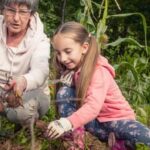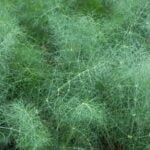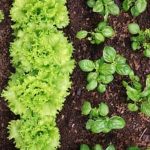Southeast Texas vegetable gardening is a popular and rewarding activity for many residents, thanks to the region’s unique climate and soil conditions. With its hot and humid weather, as well as rich, loamy soil, Southeast Texas provides an ideal environment for growing a wide variety of vegetables.
In this article, we will explore the ins and outs of vegetable gardening in Southeast Texas, including the best vegetables to grow, soil preparation techniques, seasonal planting guides, pest control strategies, watering and irrigation tips, container gardening options, and local community resources.
One of the key factors that make vegetable gardening in Southeast Texas so successful is its distinct climate. The region experiences long, hot summers with high humidity levels, creating an ideal environment for certain vegetable varieties to thrive.
Additionally, the rich and fertile soil found in Southeast Texas contributes to the success of vegetable gardens in the area. Understanding how to work with these environmental factors is crucial for those looking to start or maintain a productive vegetable garden in Southeast Texas.
In the following sections of this article, we will delve into specific aspects of vegetable gardening in Southeast Texas. From recommendations on which vegetables are best suited for the region’s climate to tips on effectively preparing and maintaining the soil, this comprehensive guide aims to help both new and experienced gardeners make the most of their efforts in growing their own fresh produce.
Best Vegetables to Grow
When it comes to Southeast Texas vegetable gardening, choosing the right vegetables to grow is essential for a successful harvest. The unique climate of this region, characterized by hot and humid summers, mild winters, and frequent rainfall, requires careful consideration when selecting which crops to cultivate. Fortunately, there are several vegetable varieties that thrive in the Southeast Texas climate and offer bountiful yields for gardeners.
One of the top choices for vegetable gardening in Southeast Texas is okra. This heat-loving crop excels in the region’s warm temperatures and well-drained soil. Another excellent option is Southern peas, such as black-eyed peas and crowder peas, which are well-suited to the climate and produce high yields. Additionally, leafy greens like collard greens and mustard greens are ideal for growing in Southeast Texas due to their ability to withstand both heat and cold.
Furthermore, tomatoes are a popular choice for Southeast Texas vegetable gardening enthusiasts due to their versatility and adaptability to the region’s climate. Varieties such as Celebrity, Solar Fire, and Sweet 100 are known for thriving in the hot and humid conditions of Southeast Texas.
In addition to these options, cucumbers, bell peppers, and snap beans are also excellent choices for vegetable gardening in this region. By selecting the right vegetables that complement the unique climate of Southeast Texas, gardeners can enjoy a successful harvest throughout the year.
| Vegatable | Recommended Varieties |
|---|---|
| Okra | Clemson Spineless |
| Southern Peas | Black-eyed peas (California Blackeye #46), Crowder peas (Mississippi Silver) |
| Leafy Greens (Collard/Mustard Greens) | Vates Collard Greens, Southern Giant Curled Mustard Greens |
| Tomatoes | Celebrity, Solar Fire, Sweet 100 |
Soil Preparation
The success of any vegetable garden in Southeast Texas largely depends on the condition of the soil. The region’s climate and soil composition require specific tips and techniques to ensure a successful harvest. Here are some important considerations for preparing the soil for your vegetable garden in Southeast Texas:
First, it is essential to test the soil to determine its pH level and nutrient content. Since Southeast Texas has acidic soil, adding lime can help raise the pH level. Incorporating organic matter such as compost, peat moss, or well-rotted manure is also crucial for improving soil structure and fertility.
Secondly, understanding the drainage requirements for vegetable plants in Southeast Texas is vital. The region’s heavy rainfall can lead to waterlogging, so it’s important to improve drainage by incorporating coarse materials like sand or perlite into the soil.
Lastly, practicing no-till gardening techniques can be beneficial for preserving moisture and nutrients in the soil while minimizing erosion in Southeast Texas. By layering organic matter on top of the soil instead of tilling it, you can create a healthy environment for your vegetable plants to thrive.
| Soil Preparation Tips | Benefits |
|---|---|
| Test Soil pH | Determines if lime is needed |
| Incorporate Organic Matter | Improves soil structure and fertility |
| Improve Drainage | Prevents waterlogging |
| No-Till Techniques | Preserves moisture and nutrients while minimizing erosion |
Seasonal Planting Guide
Planting and harvesting vegetables in Southeast Texas can be a year-round activity, thanks to the region’s mild winters and long growing season. To make the most of your vegetable garden, it’s important to plan your planting schedule according to the specific needs of each crop and the local climate. Here is a month-by-month guide to help you stay on track with your vegetable gardening in Southeast Texas:
- January: Start seeds indoors for warm-season vegetables like tomatoes, peppers, and eggplants. Transplant cool-season vegetables such as broccoli, cabbage, and cauliflower.
- February: Continue starting seeds indoors for warm-season crops. Directly sow seeds for cool-season vegetables like carrots, lettuce, and spinach. Plant onion sets and seed potatoes.
- March: Transplant seedlings of warm-season vegetables outdoors after the last frost date. Continue sowing seeds for cool-season crops. Begin harvesting early spring crops like lettuce and radishes.
- April: Plant heat-loving vegetables such as okra, sweet potatoes, and southern peas. Directly sow seeds for summer squash, cucumbers, and melons.
- May: Continue planting warm-season crops like beans and corn. Harvest cool-season crops before they bolt or become bitter due to increasing temperatures.
- June: In the hot summer months, focus on providing adequate water for your vegetable garden. Consider using shade cloth or other strategies to protect plants from excessive heat.
As you follow this month-by-month guide for planting and harvesting vegetables in Southeast Texas, remember to adjust your schedule based on the specific microclimate of your garden location within the region.
Pest Control
When it comes to Southeast Texas vegetable gardening, dealing with pests and diseases is a common challenge that many gardeners face. However, with the right strategies, it is possible to minimize the impact of these issues and protect your vegetable garden.
Here are some effective pest control strategies for dealing with common pests and diseases in Southeast Texas:
1. Integrated Pest Management (IPM): Implementing an IPM approach involves using a combination of techniques such as biological controls, cultural practices, and organic pesticides to manage pest populations. This method is environmentally friendly and helps maintain a balance between pests and their natural predators.
2. Companion Planting: Utilize the concept of companion planting by interplanting pest-repelling plants among your vegetables. For example, marigolds can help deter nematodes and other soil-borne pests, while basil can act as a natural insect repellent.
3. Regular Monitoring: Keep a close eye on your vegetable plants for any signs of pest infestations or disease outbreaks. Early detection allows for prompt intervention and minimizes the risk of damage to your garden.
By implementing these pest control strategies, you can better protect your vegetable garden from common pests and diseases in the unique climate of Southeast Texas.
Watering and Irrigation
When it comes to vegetable gardening in Southeast Texas, understanding the water needs of your plants is crucial for a successful harvest. With the hot and humid climate of the region, ensuring that your vegetables receive enough water is essential for their growth and development.
Watering Schedule
In Southeast Texas, it’s important to establish a regular watering schedule for your vegetable garden. The high temperatures and humidity can quickly dry out the soil, so a consistent watering routine is necessary to keep your plants hydrated. Generally, it’s recommended to water your vegetable garden in the early morning or late afternoon to prevent evaporation and ensure that the water reaches the roots of the plants.
Drought Tolerant Options
Given the climate of Southeast Texas, it may be beneficial to consider planting drought-tolerant vegetable varieties in your garden. Vegetables such as okra, peppers, sweet potatoes, and cherry tomatoes are known for their ability to withstand periods of drought and thrive in hot weather. By choosing these types of vegetables, you can minimize water consumption while still enjoying a bountiful harvest.
Irrigation Systems
In addition to traditional hand-watering methods, implementing an irrigation system can be a game-changer for vegetable gardening in Southeast Texas. Drip irrigation or soaker hoses can efficiently deliver water directly to the base of your plants, reducing evaporation and water waste. This method also helps prevent foliage diseases by keeping the leaves dry during watering. Consider incorporating an irrigation system into your garden strategy to ensure that your vegetables receive adequate moisture throughout the growing season.
By understanding the unique water needs of vegetables in Southeast Texas and implementing appropriate watering and irrigation techniques, you can maintain a healthy and productive garden despite the challenging climate.
Container Gardening
Benefits of Container Gardening
For those living in Southeast Texas with limited space or poor soil, container gardening provides a practical and efficient solution. With container gardening, individuals can grow their favorite vegetables without the need for traditional garden plots. This method also allows gardeners to move plants around to optimize sunlight exposure and manage temperature extremes.
Choosing the Right Containers
When it comes to container gardening in Southeast Texas, selecting the right containers is crucial. Gardeners should opt for containers that are large enough to accommodate the root systems of their chosen vegetables. Additionally, containers must have proper drainage holes to prevent waterlogging, as excessive moisture can be detrimental to plant health in the hot and humid climate of Southeast Texas.
Best Vegetables for Container Gardening
Certain vegetables thrive exceptionally well in containers and are well-suited for the Southeast Texas climate. Some popular choices include tomatoes, peppers, lettuce, herbs such as basil and cilantro, and compact varieties of cucumbers and squash. These vegetables not only perform well in containers but also provide a bountiful harvest for container gardeners in Southeast Texas.
Container gardening offers an accessible alternative for urban dwellers and those with poor soil quality in the unique climate of Southeast Texas, allowing everyone to enjoy a successful vegetable garden regardless of space limitations or soil conditions.
Community Resources
In conclusion, vegetable gardening in Southeast Texas offers a unique and rewarding experience due to the region’s climate and soil. By following the tips and techniques outlined in this guide, gardeners can successfully grow a wide variety of vegetables that thrive in this environment. From soil preparation to pest control, this comprehensive resource provides valuable information for anyone looking to cultivate their own delicious, homegrown produce in Southeast Texas.
The abundance of local gardening clubs, nurseries, and resources further enhances the vegetable gardening experience in Southeast Texas. These community resources offer valuable support, knowledge-sharing, and access to high-quality seeds and plants specifically suited for the region. Whether you are a novice or experienced gardener, connecting with these local groups can provide inspiration and guidance for your gardening endeavors.
As you embark on your own vegetable gardening journey in Southeast Texas, remember that patience and persistence are key. With proper soil preparation, strategic planting, vigilant pest control measures, and adequate watering techniques tailored to the hot and humid climate of the region, you can look forward to bountiful harvests of fresh vegetables throughout the year. Happy gardening.
Frequently Asked Questions
What Grows Well in Southeast Texas?
Southeast Texas has a warm and humid climate, making it suitable for growing a variety of plants. Some of the vegetables that grow well in this region include okra, sweet potatoes, tomatoes, peppers, and squash. These plants thrive in the long growing season and can tolerate the heat and humidity of Southeast Texas.
What Vegetables Can I Grow in South Texas?
South Texas has a hot and dry climate, which makes it ideal for growing certain vegetables. Some of the vegetables that do well in this region include tomatoes, peppers, eggplants, cucumbers, and squash. These vegetables can withstand the intense heat and require little water to thrive in South Texas.
When Should I Start a Vegetable Garden in Texas?
In Texas, the best time to start a vegetable garden varies depending on the specific region. In most parts of Texas, including South and Southeast regions, early spring is the ideal time to start a vegetable garden.
This allows the plants to establish themselves before the intense summer heat arrives. However, in some cooler parts of North Texas, it may be better to wait until late spring to avoid potential frost damage.

If you’re looking to get into vegetable gardening, or are just looking for some tips on how to make your current garden better, then you’ve come to the right place! My name is Ethel and I have been gardening for years. In this blog, I’m going to share with you some of my best tips on how to create a successful vegetable garden.





